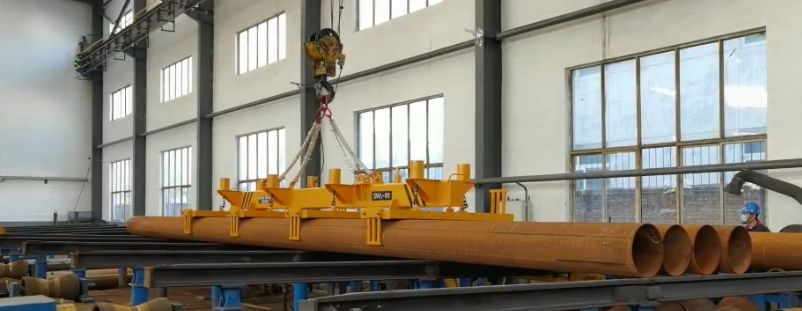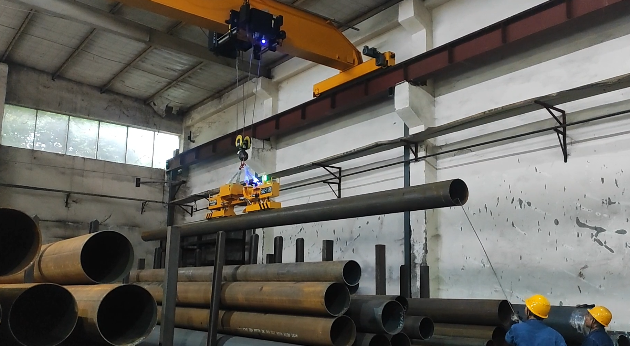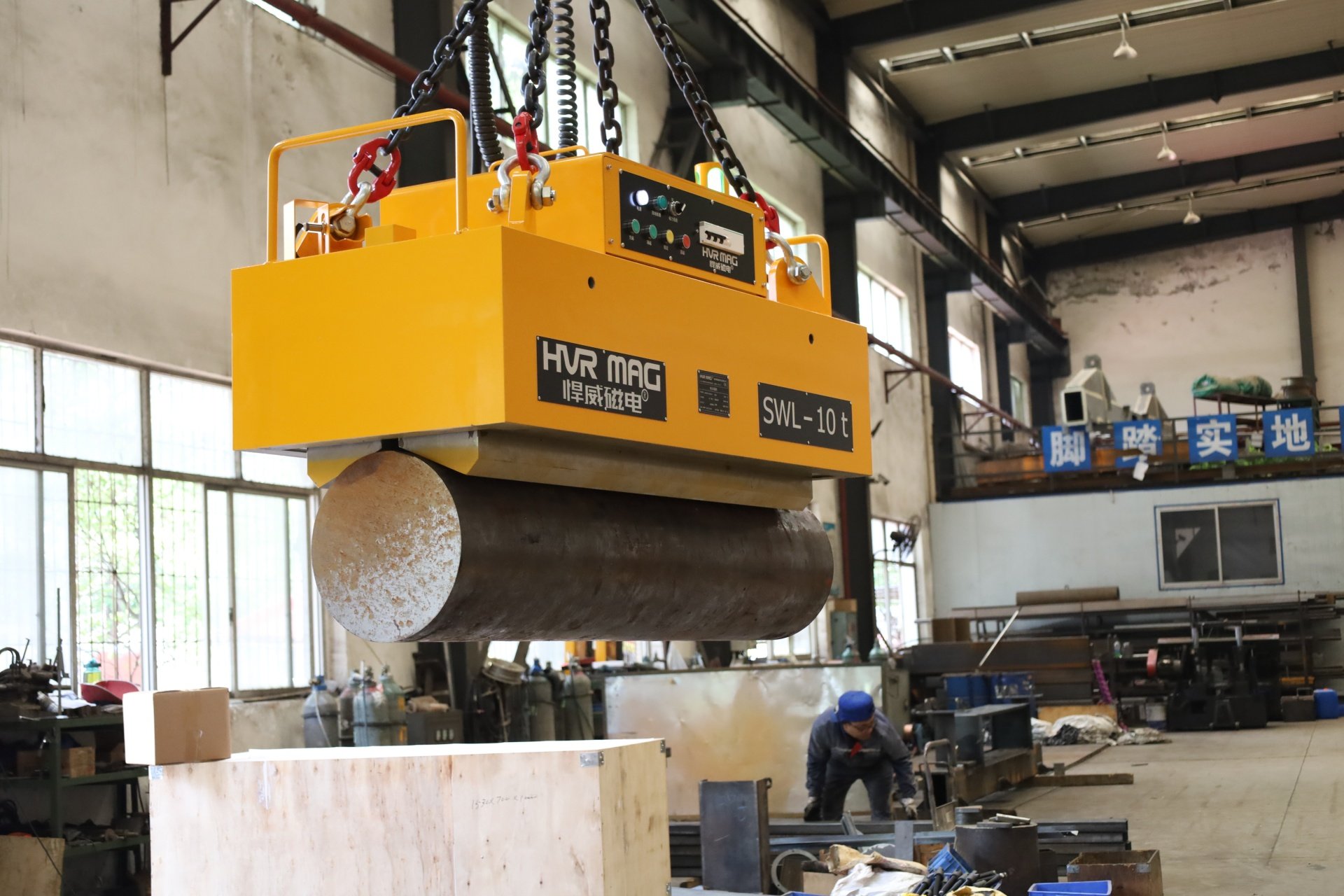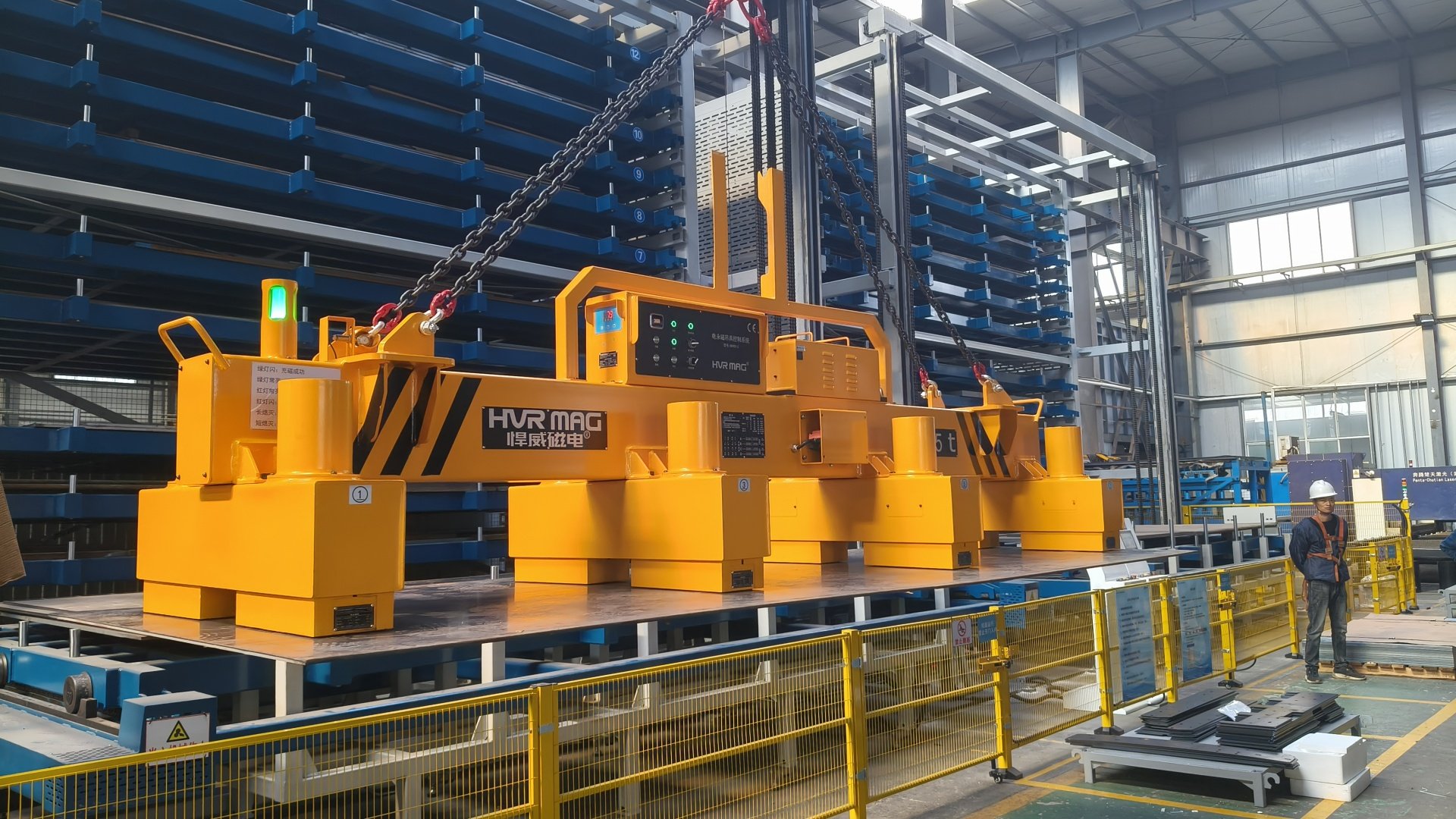Moving steel tubes is a key part of steel manufacturing,liting magnets are widely used. This process directly impacts production speed and safety. Traditional methods have challenges. For example, mechanical clamps can slip on rough surfaces. Also, they might scratch the steel tubes.
Why Choose Magnets?
That’s where electro-permanent magnetic lifters come in. Many factories now use magnetic lifting equipment, these devices offer many benefits. First, they provide magnetic force handling. This means no scratches or damage to the tube surface. Furthermore, they are highly efficient. Magnets can quickly lift and release materials. This speeds up the workflow.
How to Use Magnets Correctly
The best time to use these electro permanent magnets depends on the production stage. Let’s look at the raw material stage first. At this stage, steel tubes are large and heavy. Their surfaces are often rough. They might even have rust or scale. Because of these issues, traditional clamps can be unreliable. However, magnetic lifting is not affected by surface conditions like the vacuum lifter. Additionally, some raw steel is hot from the mill. Special high-temperature magnets can handle temperatures up to 400°C. Thus, magnets are a great choice for this stage.

After processing, steel tubes are different. Their surfaces are smooth and often coated. They have tight size tolerances. Surface quality is very important. Here, magnets prevent damage from mechanical contact. For thin-walled tubes, magnets are also better. They distribute the lifting force evenly. This prevents the tube from deforming. However, there are some limits. Magnets will not work on non-magnetic stainless steel. Some coatings might also be affected by strong magnetic fields. Therefore, careful assessment is needed for finished products.
In Conclusion
Electro-permanent magnetic lifters are a smart choice. They offer safety and efficiency for steel tube handling. Their use at the raw material stage is very common. For finished products, a more specific evaluation is needed. This depends on the material specification and surface treatment. As technology improves, magnets will be used more widely in all stages of production. This will make material handling in the steel industry safer and more efficient.





